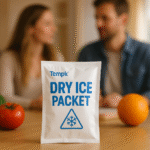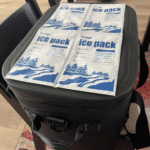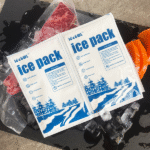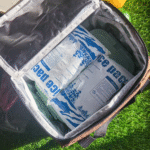Nordic Cold Chain Logistics: The Key to Efficient Temperature-Sensitive Product Shipping in 2025
In an increasingly globalized world, cold chain logistics play a crucial role in ensuring the safe transport of temperature-sensitive goods. As the Nordic region is home to several world-leading cold chain service providers, understanding the latest innovations in this sector is key for businesses aiming to optimize their operations. This guide explores the key trends, challenges, and technologies shaping the Nordic cold chain logistics market in 2025.
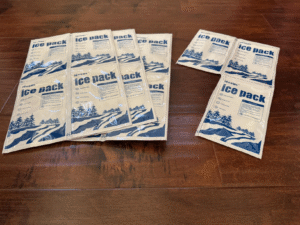
What Makes Nordic Cold Chain Logistics Unique?
Cold chain logistics in the Nordic region are designed to cater to the challenges posed by extreme weather conditions while maintaining the integrity of perishable products. From ensuring that seafood remains fresh to shipping pharmaceuticals at specific temperatures, Nordic cold chain solutions provide the expertise and infrastructure necessary to meet global demands for temperature-sensitive goods.
The Role of Innovation in Nordic Cold Chain Solutions
Innovation is the cornerstone of the Nordic cold chain market. Companies operating in this region leverage advanced technologies like IoT sensors, automated systems, and AI-driven optimization tools to enhance operational efficiency. These innovations ensure that products are stored and transported at the ideal temperatures, reducing spoilage, ensuring compliance with regulatory standards, and improving supply chain transparency.
Key Fact: The Nordic cold chain market is expected to grow significantly in the coming years, with projections of a CAGR of 5.16% through 2030 in Sweden alone
nordic cold chain
.
How Technology is Transforming Nordic Cold Chain Logistics
The Power of IoT and Real-Time Data Monitoring
In 2025, IoT (Internet of Things) technology is increasingly utilized to optimize cold chain logistics. By integrating smart sensors into temperature-controlled systems, Nordic logistics providers can track the conditions of shipments in real time. This provides invaluable insights into the status of perishable goods, allowing for immediate corrective action in case of any temperature deviation.
Benefits of IoT in Cold Chain Logistics:
-
Real-time data monitoring ensures that any temperature fluctuations are quickly identified and addressed.
-
Enhanced transparency of the supply chain builds trust with consumers and clients.
-
Improved risk management reduces the chances of product spoilage and regulatory violations.
AI and Automation: The Future of Cold Chain Optimization
AI and automation technologies are shaping the future of cold chain logistics in the Nordic region. Automated warehouses, AI-powered predictive analytics, and route optimization tools help logistics providers reduce costs, minimize human error, and improve delivery times.
For example, AI algorithms can predict potential risks of temperature excursions, enabling logistics teams to take proactive measures to prevent spoilage before it occurs. These advancements ensure that perishable products reach their destination at the required temperature without delays.
Key Trends in Nordic Cold Chain Logistics for 2025
The Nordic cold chain sector is evolving rapidly, driven by several key trends that will continue to shape the market in 2025 and beyond.
1. Sustainable Cold Chain Practices
Sustainability is a growing concern in all sectors, including cold chain logistics. In response to increasing environmental awareness and regulatory pressure, Nordic cold chain providers are adopting eco-friendly solutions, such as biodegradable packaging, energy-efficient refrigeration systems, and renewable energy-powered cold storage facilities.
Sustainability Initiatives:
-
Biodegradable packaging like dry ice packs that do not harm the environment.
-
Solar-powered refrigeration units to reduce carbon footprints.
-
Energy-efficient transport systems to reduce the environmental impact of logistics operations.
By embracing these green logistics practices, Nordic cold chain companies are not only complying with regulations but also meeting consumer expectations for sustainability.
2. Blockchain Technology for Enhanced Transparency
Blockchain technology is becoming a game-changer in the cold chain logistics industry. By providing secure, tamper-proof records of product movements, blockchain enhances supply chain transparency. This is particularly critical in the pharmaceutical industry, where maintaining product integrity and meeting regulatory standards is of paramount importance.
3. Growth in Pharmaceutical Cold Chain Logistics
The pharmaceutical industry is one of the largest drivers of growth in Nordic cold chain logistics. With increasing global demand for vaccines, biologics, and biotech drugs, maintaining the cold chain for these products is crucial. In the Nordic region, the use of medical-grade dry ice packs, gel packs, and advanced packaging solutions ensures that these sensitive products remain within the required temperature range during transport.
Fact: The pharmaceutical cold chain in the Nordic region is expected to grow by 10% annually due to the surge in global healthcare product exports
nordic cold chain
.
How Nordic Cold Chain Logistics is Revolutionizing Pharmaceutical Transport
Ensuring that pharmaceuticals and vaccines remain at their optimal temperatures is crucial to preserving their efficacy and safety. Nordic cold chain providers have adopted a range of advanced solutions, including real-time monitoring, ultra-low temperature storage, and validated packaging, to meet the stringent requirements of pharmaceutical logistics.
Ultra-Low Temperature Solutions
For sensitive pharmaceuticals like vaccines and gene therapies, ultra-low temperatures are essential. Nordic companies use specialized packaging, such as dry ice and gel packs, to maintain the required temperature conditions. These solutions are critical for ensuring the integrity of vaccines during long-distance transport, especially as global demand for these products increases.
Challenges in Nordic Cold Chain Logistics
While Nordic cold chain logistics is highly advanced, it is not without its challenges. The region’s harsh climates, remote geography, and strict regulatory requirements can make cold chain logistics complex and costly. However, businesses can overcome these challenges by investing in the right technologies and working with experienced logistics providers who understand the specific needs of the Nordic market.
Common Challenges and How to Address Them
-
Harsh Climates and Remote Geography: The Nordic region’s cold temperatures and vast distances require specialized insulated transport and packaging solutions. Investing in phase-change materials (PCMs) and insulated containers is key to maintaining the integrity of temperature-sensitive products.
-
Regulatory Compliance: Cold chain logistics in the Nordic region must comply with stringent EU and regional regulations, including Good Distribution Practice (GDP) and Good Manufacturing Practice (GMP). Businesses must ensure that their operations are fully compliant to avoid penalties and product recalls.
How to Succeed in the Nordic Cold Chain Market in 2025
To succeed in the Nordic cold chain market, businesses must embrace the latest technological advancements, including IoT, AI, and blockchain, while also prioritizing sustainability. By investing in digital visibility, adopting green logistics practices, and understanding the unique challenges of the Nordic climate, businesses can optimize their cold chain operations and stay ahead of the competition.
Conclusion
Nordic cold chain logistics is essential for businesses that rely on the safe transport of temperature-sensitive products, especially in industries such as pharmaceuticals, food, and biotechnology. With the adoption of advanced technologies, sustainable practices, and regulatory compliance, Nordic cold chain providers are well-equipped to meet the demands of a growing global market. By staying ahead of the latest trends and embracing innovative solutions, businesses can ensure that their products are transported safely and efficiently, meeting the needs of customers and regulatory bodies alike.


















